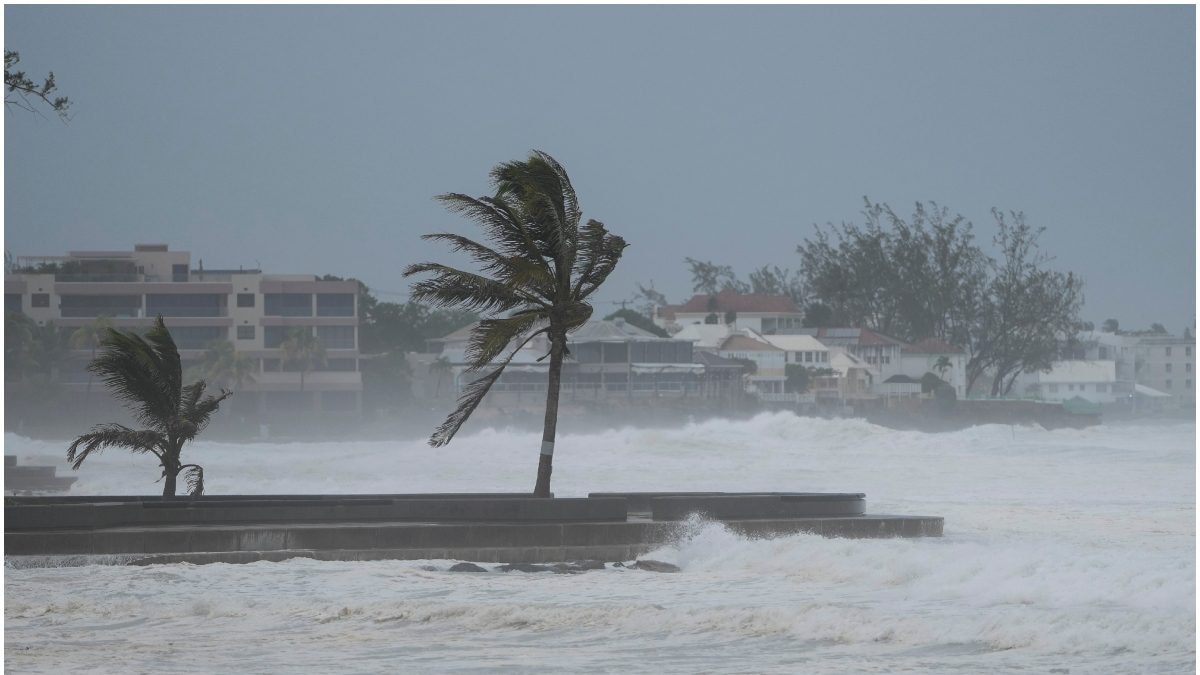
Last Updated:
Natural disasters cost the world billions. Quantum computing, combined with satellite data, offers a powerful new tool for predicting and mitigating events like earthquakes and hurricanes, saving countless lives and economies

Predicting and mitigating natural disasters is a complex challenge. (AP File)
The economic losses incurred worldwide in 2022 due to natural disasters, including both direct and indirect impacts, amounted to approximately $313 billion. The longer-lasting and more profound effects on society are often attributed to the economic, social, and environmental losses resulting from indirect impacts. For instance, the Great East Japan Earthquake and Tsunami in 2011 caused an estimated loss of $300 billion, Hurricane Katrina in 2005 resulted in around $160 billion in losses, and the Indian Ocean Tsunami in 2004 caused an estimated loss of $100 billion.
Leveraging Satellite Data for Natural Disaster Response
Integrating satellite data with quantum computing revolutionises in predicting and mitigating natural disasters. Satellite data provides comprehensive and real-time information on various environmental parameters, such as atmospheric conditions, land and sea surface temperatures, humidity, wind patterns, and seismic activity. When combined with the power of quantum computing, this data can be processed and analysed at unprecedented speeds, leading to more accurate and timely predictions.
Satellites play a crucial role in tracking weather systems, helping to predict hurricanes, typhoons, and other severe weather events. They provide data on atmospheric pressure, temperature, and humidity, enabling accurate forecasts of storms and extreme weather. Satellites also monitor ground movements and seismic activity, aiding in the prediction and analysis of earthquakes and volcanic eruptions.
The application of satellite data for hydrological observations includes flood monitoring, tracking river levels, rainfall, and potential flood zones. Additionally, by observing soil moisture and vegetation health, satellites help assess drought conditions. Satellite data also aids in identifying areas at risk of landslides through topographical analysis and monitoring changes in sea level, which could lead to flooding and erosion.
Role of Quantum Computing and Satellite Data in Predicting Natural Disasters
Predicting and mitigating natural disasters is a complex challenge that requires the integration of advanced technologies to enhance accuracy and effectiveness. Quantum computing holds significant potential in this field by enabling the rapid processing of vast satellite datasets and solving complex mathematical models efficiently.
By leveraging quantum algorithms, researchers can perform simulations that accurately predict future natural disaster patterns. These simulations incorporate multiple variables, such as atmospheric pressure, temperature, humidity, wind speed, seismic activity, and landslide risks, to improve forecasting precision.
Quantum computers excel in real-time analysis of large-scale data from sensors and diverse sources, providing timely and critical insights for disaster management and mitigation. This capability enhances preparedness and response strategies by enabling faster and more accurate decision-making.
Mitigating Natural Disasters Using Quantum Computing
Quantum computing can also aid in mitigating the effects of natural disasters. For instance, in the event of earthquakes, quantum computers can simulate the behaviour of buildings and other structures under various seismic conditions. These simulations enable engineers to identify weak points and devise strategies to enhance the earthquake resistance of structures, thereby reducing damage and saving lives. This approach can also be applied to infrastructure such as train tracks to minimise derailments.
Similarly, quantum computing can simulate the behaviour of coastal areas during hurricanes and severe weather events. By analysing these simulations, researchers can identify high-risk flooding zones and develop effective protective strategies. For instance, constructing sea walls and other barriers can help shield coastal communities from storm surges, while well-planned evacuation protocols can ensure the safe relocation of residents from flood-prone areas.
Although quantum computing still has a long way to go in advancing natural disaster warning systems, its potential benefits could greatly enhance resilience against such events and save countless lives.
The author is Data Scientist and former Artificial Intelligence Consultant Prime Minister’s Office (NSCS). The views expressed in the above piece are personal and solely those of the author. They do not necessarily reflect News18’s views.






